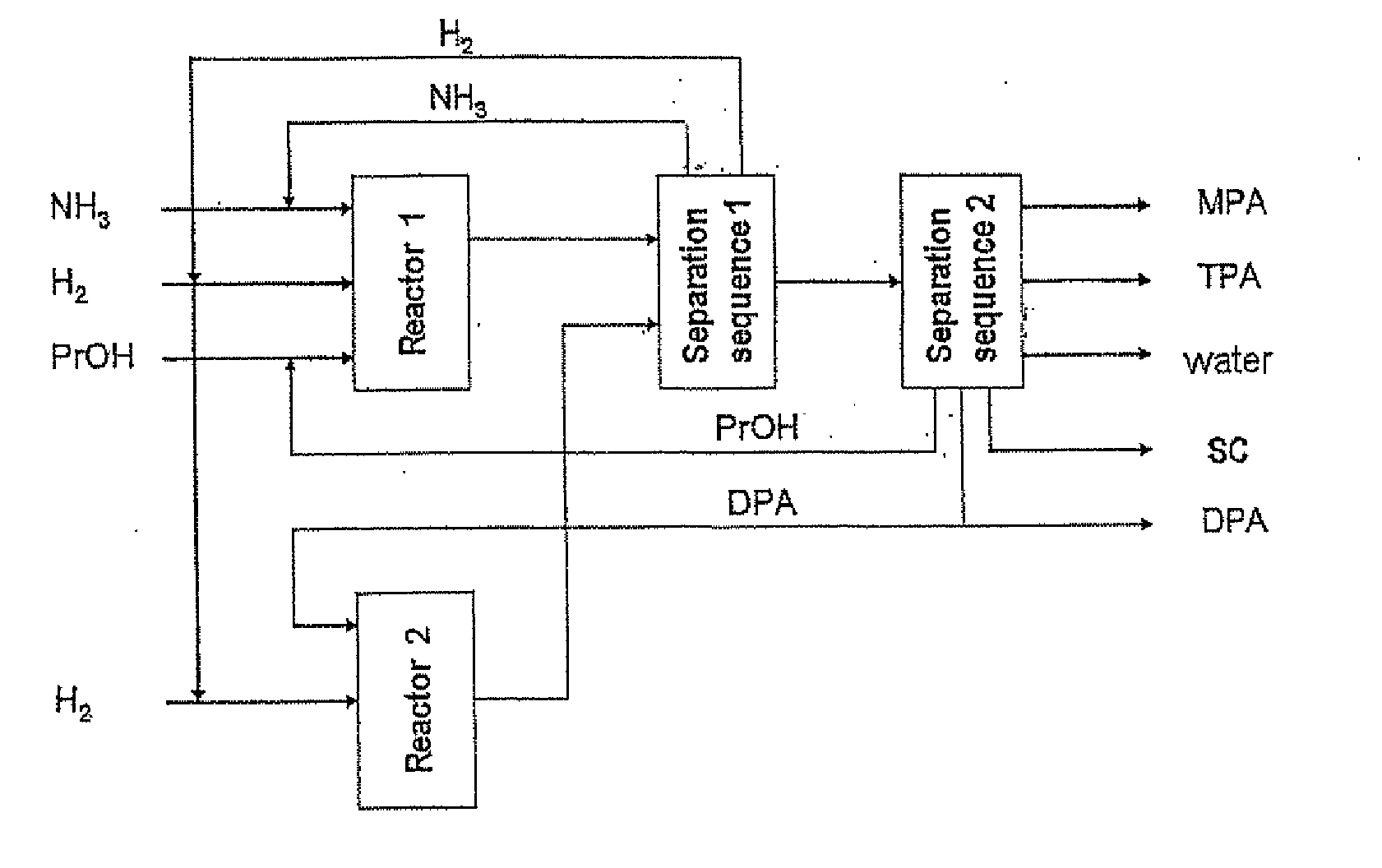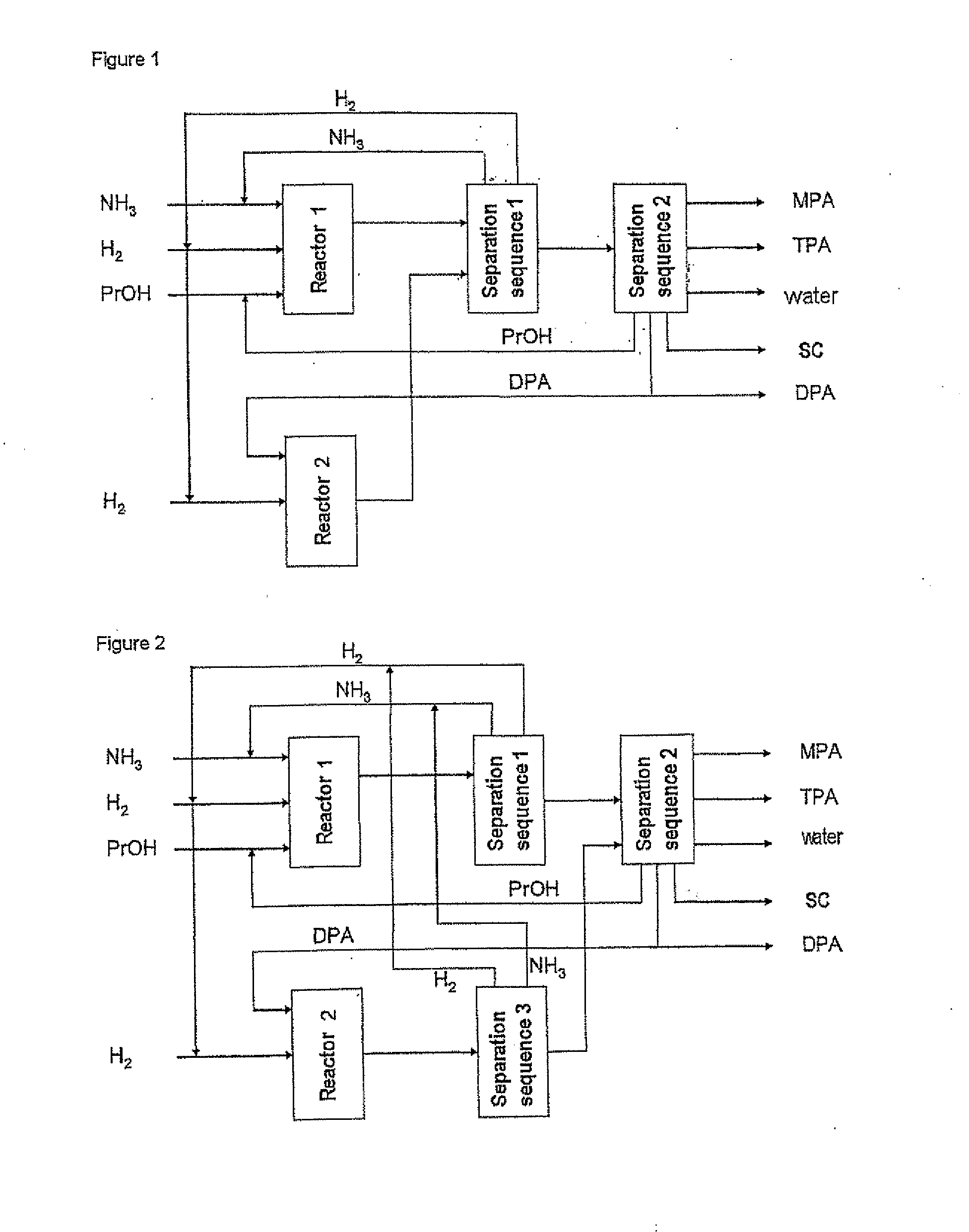Process for preparing tri-n-propylamine (TPA)
a tri-propylamine and process technology, applied in the field of tri-propylamine preparation, can solve the problems of difficult influence on the product mixture, and the inability to produce exactly the amine product mixture desired by the market, and achieve the effects of improving the economical process for preparing tri-propylamine, high yield, space-time yield (sty) and selectivity, and simple and economical
- Summary
- Abstract
- Description
- Claims
- Application Information
AI Technical Summary
Benefits of technology
Problems solved by technology
Method used
Image
Examples
example 1
[0079]The starting material 100% DPA was disproportionated continuously in the absence of NH3 over the catalyst “A S4”. At a pressure of 140 bar, a space velocity of 0.50 kg / ·h and an amount of hydrogen of 500 standard l / l·h, the following composition of the reaction product mixture (in % by weight) was obtained at 250° C.: 4% of MPA, 51% of DPA and 45% of TPA.
example 2
[0080]The starting material 100% DPA was disproportionated continuously in the absence of NH3 over the catalyst “A S4”. At a pressure of 85 bar, a space velocity of 0.51 kg / l·h and an amount of hydrogen of 400 standard l / l·h, the following composition of the reaction product mixture (in % by weight) was obtained at 220° C.: 4% of MPA, 47% of DPA and 49% of TPA.
example 3
[0081]The starting material 100% DPA was disproportionated continuously in the absence of NH3 over the catalyst “A S4”. At a pressure of 40 bar, a space velocity of 0.59 kg / l·h and an amount of hydrogen of 405 standard l / l·h, the following composition of the reaction product mixture (in % by weight) was obtained at 215° C.: 5% of MPA, 50% of DPA and 45% of TPA.
PUM
| Property | Measurement | Unit |
|---|---|---|
| Temperature | aaaaa | aaaaa |
| Pressure | aaaaa | aaaaa |
| Percent by mass | aaaaa | aaaaa |
Abstract
Description
Claims
Application Information
 Login to View More
Login to View More - R&D
- Intellectual Property
- Life Sciences
- Materials
- Tech Scout
- Unparalleled Data Quality
- Higher Quality Content
- 60% Fewer Hallucinations
Browse by: Latest US Patents, China's latest patents, Technical Efficacy Thesaurus, Application Domain, Technology Topic, Popular Technical Reports.
© 2025 PatSnap. All rights reserved.Legal|Privacy policy|Modern Slavery Act Transparency Statement|Sitemap|About US| Contact US: help@patsnap.com


